THE
SETTLEMENT AT PLYMOUTH
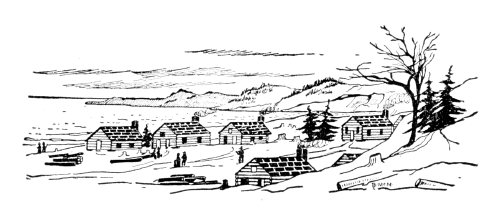
"God had sifted
three kingdoms to find the wheat for this planting,
Then had sifted
the wheat as the living seed of a nation;
So say the
chronicles old, and such is the faith of the people."
|
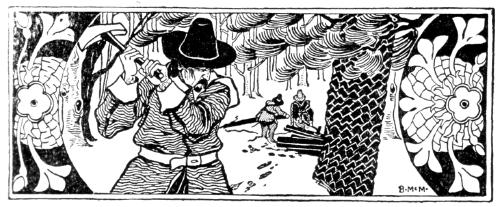
FOR purposes of convenience as well
as relationship the company was divided into nineteen families, as
before mentioned, each building their own house and residing together
therein.
Operations in this direction
commenced immediately upon their selection of a site and continued
throughout the winter.
To locate their respective houses
and to construct the same under the existing conditions, the winter
being intensely cold, was a great undertaking, and they labored amid
great hardships, though skillfully, with the timber near at hand.
Before spring they had constructed
two rows of houses, facing each other and stretching inland from a
point near the shore line, at the end of which was built by joint
effort a general storehouse in the centre of a barricaded plot of
ground.
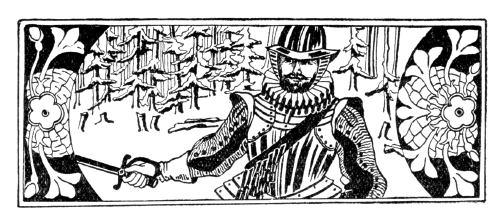
Here they purposed keeping their
common belongings and the results of their labors in the field.
On 17th February a council was held
and Myles Standish, their only cavalier, appointed captain and vested
with power to maintain military rule. Standish was bred a soldier in
the Low Countries and had never enlisted in the army of Christ, but
joined the Puritans in England either through their desire to avail
themselves of his prowess or because of his own love of adventure and
excitement, as he might have presumed would be forthcoming from the
expedition to the new country.
In any event, he was willing to
plight his future with theirs, and proved a valuable addition to their
councils. Of irascible temper and just anger, he was irreproachable as
to integrity and devotion, and was well suited to the office.
Within a month of Standish assuming
command a lone red man came into Plymouth, saying, in good English,
"Welcome, Englishmen! Welcome, Englishmen!"

His name was Samoset, a Sagamore
from Monhegan, in the north, who had learned a few words of English
from the crews of the fishing vessels which had been in his
neighborhood. He was the first native to visit the settlers in their
new home, and, save by distant view, the first of his race that they
had come in contact with.
In a subsequent visit, made shortly
after, he brought with him another Indian, named Squanto, a native of
the same tribe, who had been kidnapped by Captain Hunt in 1614 and who
had been in England, whither he had been carried by his captor and
where he had picked up enough of the language to be able to converse
intelligently.
From him they learned that in the
neighborhood there were many tribes of red men, all under the dominion
of Massasoit, chief of the Wampanoags, who overran the southeasterly
portion of New England. On the first of April Massasoit appeared before
the settlers with sixty men, and in behalf of his allied tribes made an
offensive and defensive treaty, which guaranteed the settlers freedom
from molestation or annoyance, and which was strictly adhered to for
over half a century. It is likewise a significant fact that this colony
alone was thus favored with the good-will of the Indian, and standing
likewise alone in having kept faith with the native American.
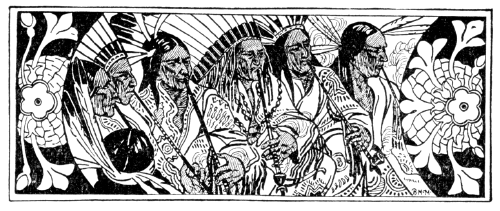
The treaty also granted them lands
adjacent to the present location of the settlement, and the Indians
also sold them still more in the vicinity in anticipation of their
future needs.
The 5th April, 1621, saw the
departure of the Mayflower on her return voyage to
England. Yet another, sad and sorrowful parting. But with true
Christian fortitude and earnestness, though with a bitter
heart-longing, the little band that remained immediately set about
preparing the way for others yet to come.
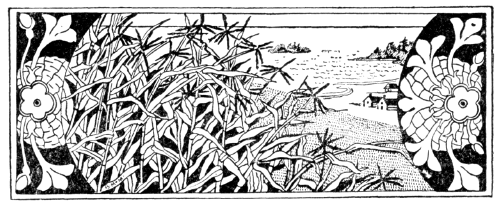
During the past winter it is
recalled that one-half of the original number had succumbed to various
ills and disasters and now lay buried on the hilltop overlooking the
town, -- their graves covered with growing corn, that the natives might
not know to what numbers the little company had been reduced, and which
was still further lessened by the departure of the crew of the Mayflower,
who left at this time on the return voyage to England.
Among themselves there was little
dissension or variance to the general laws and rules laid down by the
councils. Whatever differences of individual opinions there may have
been, were for more moderate and less stringent views as regards their
form of self-government, and not in the least from any cause bearing
upon their ultimate object and unanimous desire -- the founding of a
new church in a new land. These minor considerations soon regulated
themselves, and by the early summer corn, barley, and peas were growing
as the result of their undivided attention to the details which made
their future not only possible but likewise an assured success.
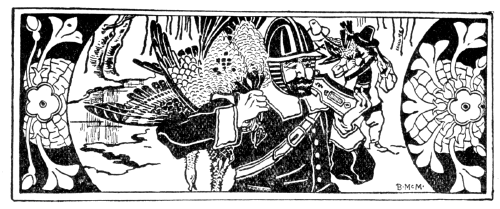
Their early spring planting was
ably planned by the Indian, Squanto, who had become much enamored of
their good graces, and was intelligent and able in many respects beyond
any of his fellows.
Successful crops, generally,
rewarded their efforts at the coming of harvest, which having been
gotten in and housed in the common store, Governor Bradford sent men
with fowling-pieces into the wood to gun for wild turkey, which
abounded thereabouts, and who returned shortly with enough for a week's
supply for the common larder: Then followed a season of thanksgiving
and prayer, with much rejoicing at their present good fortune and the
fruits of their past labors. Within a year from the date of the arrival
of the Mayflower the second ship, the Fortune,
of fifty-five tons, anchored off Cape Cod on the 9th of November, 1621,
bringing recruits for the settlement and such additional supplies and
provender as the early voyagers were supposed to be in need of.
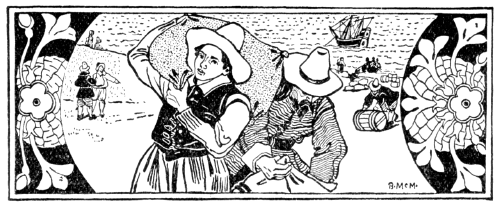
On board were thirty-five persons,
including Robert Cushman, many of them no doubt being of the party who
originally put back in the Speedwell. The Fortune
sailed from London early in July, but on account of
adverse winds did not clear the channel until the end of August,
thereby consuming four months on the voyage.
From the time of the departure of
the Mayflower in the April
previous up to the arrival of the Fortune in
November six more of their number had died, leaving but a mere fragment
of the original company to welcome the new comers. This influx,
however, did much to revive their tired spirits, and the winter passed
happily and comfortably amid new and enlarged plans for future
operations.
The following year another small
ship, the Anne, brought over still others, and
soon after their arrival the council decided to convey a detailed
report as to their progress and future prospects to the authorities in
England, and deputed Edward Winslow to make the report in person to the
representatives of the merchant adventurers in London.
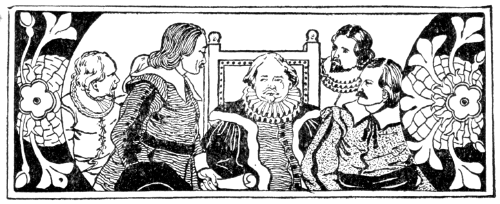
Winslow sailed from New Plymouth in
the Anne on 18th September, and upon his arrival
in England made his report forthwith, with the result that further
provision was made for the fitting out of yet another expedition to
plant colonies in the vicinity of Plymouth Plantation, and more
especially at Cape Anne. Supplies were accordingly furnished for eighty
days for the use of the colony while transporting the additional
numbers thither, and the Charily was fitted out to
sail in March, 1622, and accompanied by Winslow as sponsor they set out
upon the track now so well laid down.
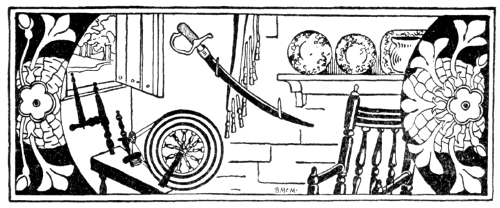
Aboard the Charity were shipped
several Devon cattle, the first ever brought into this country. And
here may be noted the fact of the vast quantity of Mayflower relics
which are supposed to exist even at the present day, the chief among
these being chairs, clocks, cradles, spinning-wheels, china, and
silverware. Without attempting to disparage the value or authenticity
of any heirlooms now in the possession of any one in particular, it is
well to remember the jocular statement that the Mayflower
must necessarily have been several times her actual size in order to
have brought all such into the country. Be this as it may, the
reference presumably holds good to the other ships which followed so
closely in the wake of the first voyage of the Mayflower. The
intending settlers were undoubtedly as well supplied with household
goods as their circumstances would seem to warrant, and in many cases
the reference is undoubtedly genuine, and the number of pieces which
exist to-day is probably large, even considering the ravages of time,
which is perhaps counterbalanced by the usual New England thrift, which
destroys nothing which may eventually become useful.
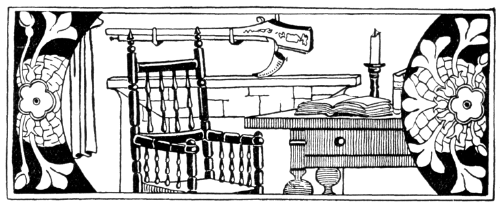
Luxuries, however, were not common
in their belongings, hence chairs, being considered luxuries and only
used by those high in the councils as a mark of rank, have proven
comparatively few in number, and teapots could not have been plentiful,
as an authority states that tea was worth $30 per pound at that time.
After a voyage approximating four
months, the usual length, the Charily arrived at Plymouth, and there
discharged a part of the company and the cattle, and taking on board
certain of the able men of the settlement and some hewn timber sailed
across the bay to Cape Anne. Here they proposed using the skill of the
forces at hand, and to speedily construct a new settlement on the lines
so successful at Plymouth.
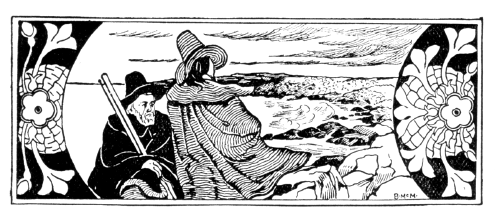
They spent the winter here on a
rocky point of land, without the shelter of protecting hills and
forests, amid considerable hardship, and in the following spring
interest and enthusiasm in the future possibilities of the settlement
having languished to a considerable extent, the weakened remnant
removed and united with the contingent already located at Naumkeag, a
few miles distant.
The principal causes which led up
to the undertaking of the first voyage of the Mayflower, and
the subsequent voyages of other ships with the same ultimate object in
view, have been recounted herein. Their motives were not speculation,
excitement, or adventure, but the fundamental principle of freedom of
religious worship for their little hand of followers. This it was not
possible for them to find at home, and the final outcome had they
remained in Holland would have been vague and uncertain. Hence they
were of necessity obliged to roam, which, however, was set about with
that firm and earnest purpose which distinguished all previous acts of
the Puritans, and the after deeds of the Pilgrims.
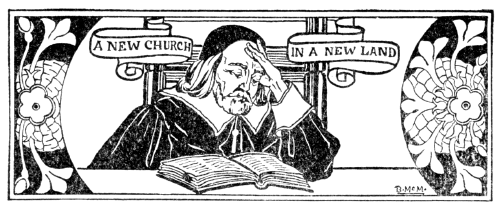
The exodus opened a new era in the
history of the New World, and doubtless was the sowing of the seed
which afterward brought the colonists complete independence from the
rule of the Crown.
FINIS.

copyright, Kellscraft Studio
1999-2004
(Return to Web Text-ures)
|

